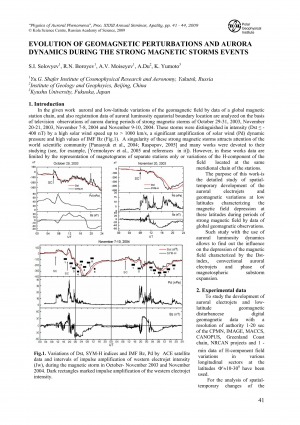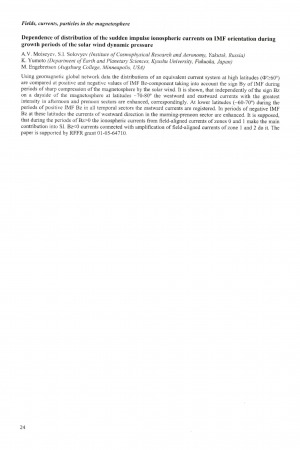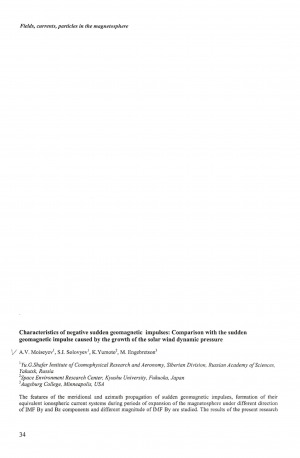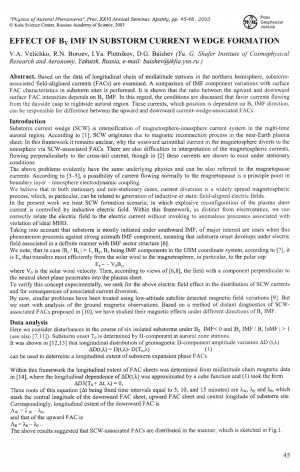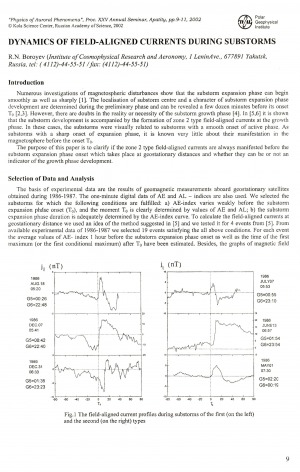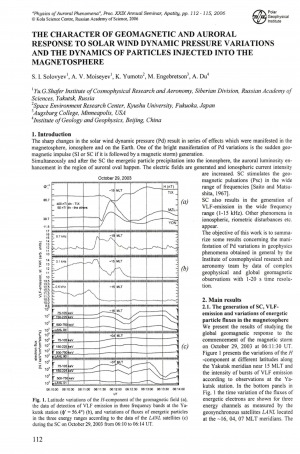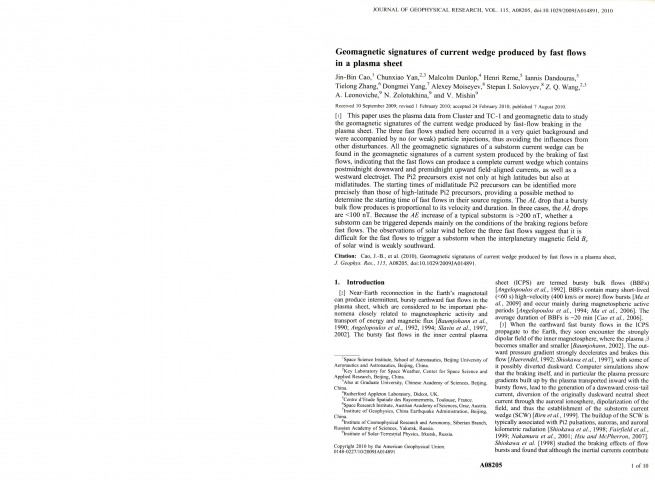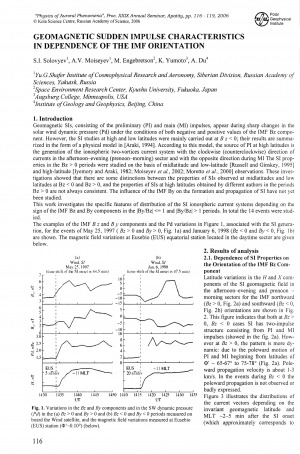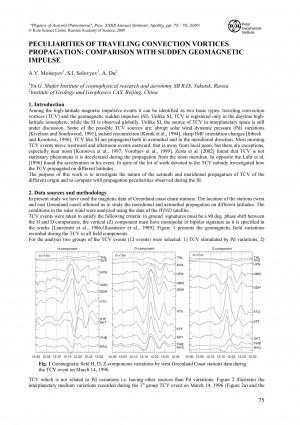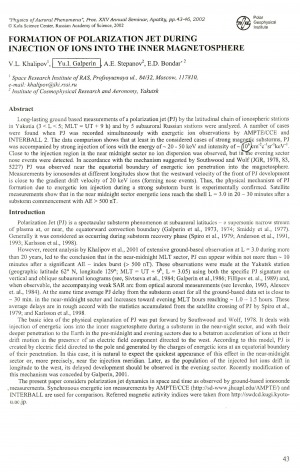Количество страниц: 4 с.
Evolution of geomagnetic perturbations and aurora dynamics during the strong magnetic storms events / S. I. Solovyev, R. N. Boroev, A. V. Moiseyev, A. Du, K. Yumoto // Physics of auroral phenomena : proceedings of the 32nd annual seminar, Apatity, 3 – 6 March 2009. – 2010. – P. 41-44.
Количество страниц: 2 с.
Dependence of distribution of the sudden impulse ionospheric currents on IMF orientation during growth periods of the solar wind dynamic pressure : [тезисы докладов] / A. V. Moiseyev, S. I. Solovyev, K. Yumoto, M. Engebretson // Physics of auroral phenomena : 26th annual seminar, 25-28 February 2003 : abstacts. – 2003. – P. 24.
Количество страниц: 2 с.
Characteristics of negative sudden geomagnetic impulses: Comparison with the sudden geomagnetic impulse caused by the growth of the solar wind dynamic pressure : [тезисы докладов] / A. V. Moiseyev, S. I. Solovyev, K. Yumoto, M. Engebretson // Physics of auroral phenomena : 30th annual seminar, 27 February – 2 March 2007 : abstracts. – 2007. – P. 34-35.
Количество страниц: 4 с.
Effect of Bγ IMF in substorm current wedge formation / V. A. Velichko, R. N. Boroev, I. Ya. Plotnikov, D. G. Baishev // Physics of auroral phenomena : proceedings of the 26th annual seminar, 25 - 28 February 2003. – 2003. – P. 45-48.
Количество страниц: 3 с.
Boroyev, R. N. Dynamics of field-aligned currents during substorms / R. N. Boroyev // Physics of auroral phenomena : proceedings of the 25th annual seminar, Apatity, 26 February – 1 March 2002. – 2002. – P. 9-11.
Количество страниц: 4 с.
The character of geomagnetic and auroral response to solar wind dynamic pressure variation and the dynamics of particles injected into the magnetosphere / S. I. Solovyev, A. V. Moiseyev, K. Yumoto, M. Engebretson, A. Du // Physics of auroral phenomena : proceedings of the 29th annual seminar, Apatity, 27 February – 3 March 2006. – 2007. – P. 112-115.
Количество страниц: 6 с.
Geomagnetic signatures of current wedge produced by fast flows in a plasma sheet / Jin-Bin Cao, Chunxiao Yan, Malcolm Dunlop, Henri Reme, Iannis Dandouras, Tielong Zhang, Dongmei Yang, Alexey Moiseyev, Stepan I. Solovyev, Z. Q. Wang, A. Leonoviche, N. Zolotukhina, and V. Mishin // Journal of Geophysical Research: Space Physics. – 1978. – 2010 (August), vol. 115, N 8. – P. A08205.
Количество страниц: 4 с.
Geomagnetic sudden impulse characteristics in dependence of the IMF orientation / S. I. Solovyev, A. V. Moiseyev, M. Engebretson, K. Yumoto, A. Du // Physics of auroral phenomena : proceedings of the 29th annual seminar, Apatity, 27 February – 3 March 2006. – 2007. – P. 116-119.
Количество страниц: 4 с.
Moiseyev, A. V. Peculiarities of traveling convection vortices propagation: comparison with sudden geomagnetic impulse / A. V. Moiseyev, S. I. Solovyev, A. Du // Physics of auroral phenomena : proceedings of the 32nd annual seminar, Apatity, 3 – 6 March 2009. – 2010. – P. 75-78.
Количество страниц: 4 с.
Formation of polarization jet during injection of ions into the inner magnetosphere / V. L. Khalipov, Yu. I. Galperin, A. E. Stepanov, E. D. Bondar // Physics of auroral phenomena : proceedings of the 25th annual seminar, Apatity, 26 February – 1 March 2002. – 2002. – P. 43-46.
DOI: 10.1016/S0273-1177(03)00016-4
